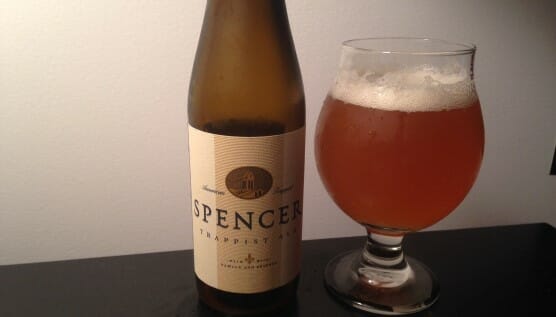Spencer Trappist Ale

Early on in my craft beer education, I distinctly recall hearing the lore of the Trappist breweries for the first time. There was something mystical about the background: Seven breweries housed in antiquated European monasteries, most dating from the 1800s or earlier. There were few words in beer that more strongly implied quality—not all beer made at monasteries was Trappist, but few disagreed that the best Belgian-style abbey ales in the world were made at monasteries with names like Westvleteren, Rochefort and Chimay.
But does that distinction really mean the same thing when it’s been newly granted? Within the last three years, the world has seen the arrival of three new Trappist breweries, expanding the count to 10. In 2012, the Austrian Stift Engelszell made history by being the first to be certified by the International Trappist Association outside of Belgium or The Netherlands. And in 2013, St. Joseph’s Abbey in Spencer, Massachusetts did something that many wouldn’t have believed possible, becoming a certified Trappist brewery right here in the United States. They make only one beer, Spencer Trappist Ale, and until recently it was fairly hard to acquire. But now, America’s only Trappist brew is getting out there, ready to be measured and judged against some of the greatest Belgian ales in the world.
Spencer Trappist Ale is what is occasionally referred to as a “patersbier,” a term sometimes used interchangeably with “Belgian single/singel” to denote a lower alcohol, typically blonde, drinkable Belgian ale that is served to the monks either on special occasions or as part of their daily rations at the monastery. It’s not the most common style of abbey ale to see commercially, being much surpassed by dubbel, tripel, quadrupel, etc., but it has started to see a comeback, with many more commercial variants showing up on store shelves these days. I’m all for it—a light, zesty Belgian single is, to me, one of the best styles of lawnmower beer in the world.
With that said, the St. Joseph product isn’t quite as light as others, an “overgrown single” of sorts, weighing in at 6.5% ABV. It’s easy to imagine that such a style was chosen because other examples from Belgian brewers aren’t quite as common, creating a niche for the brewers of St. Joseph’s Abbey to claim for their own. And they really do succeed admirably at that.
-

-

-

-

-

-

-

-

-

-

-

-

-

-

-

-

-

-

-

-

-

-

-

-

-

-

-

-

-

-

-

-

-

-

-

-

-

-

-

-








































